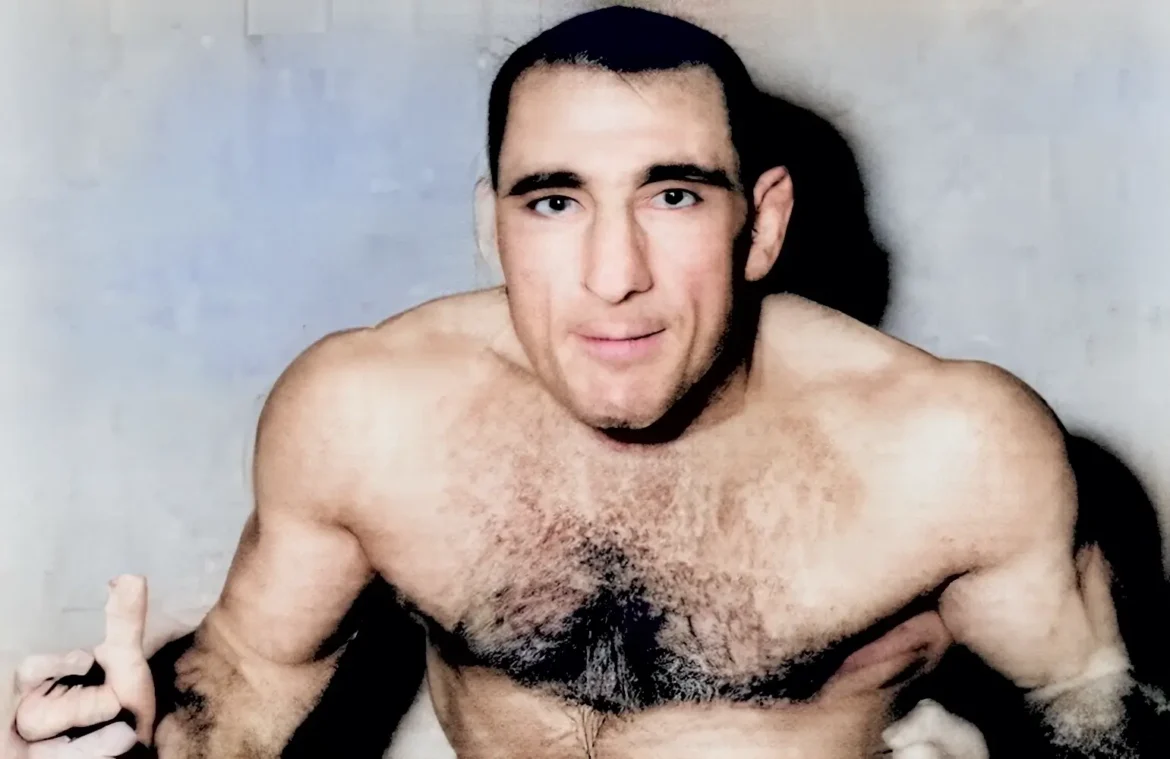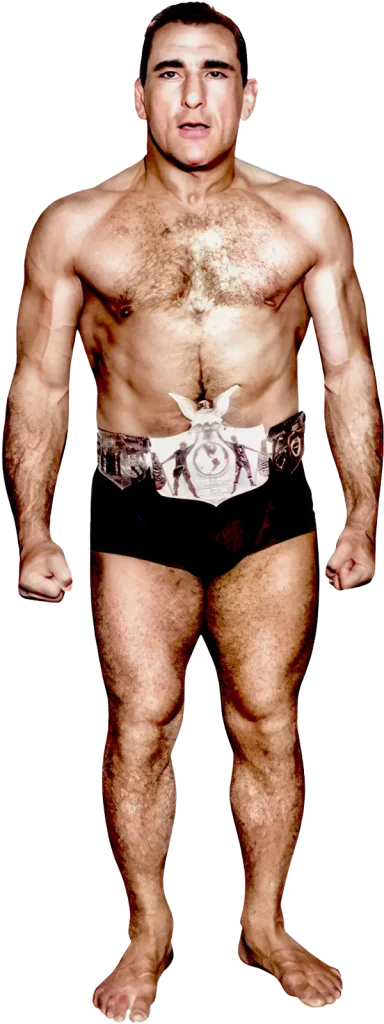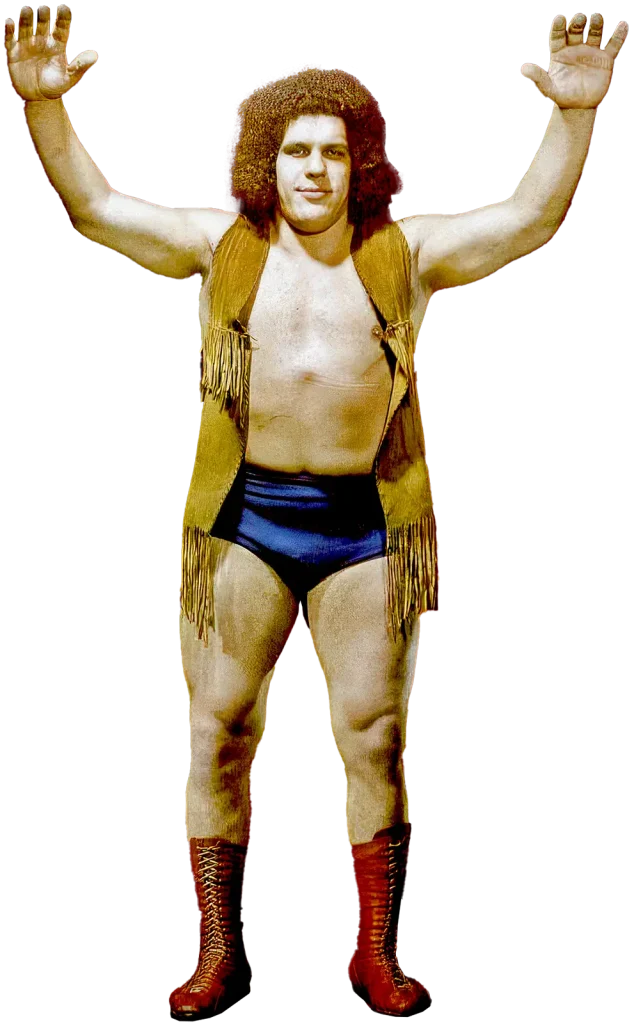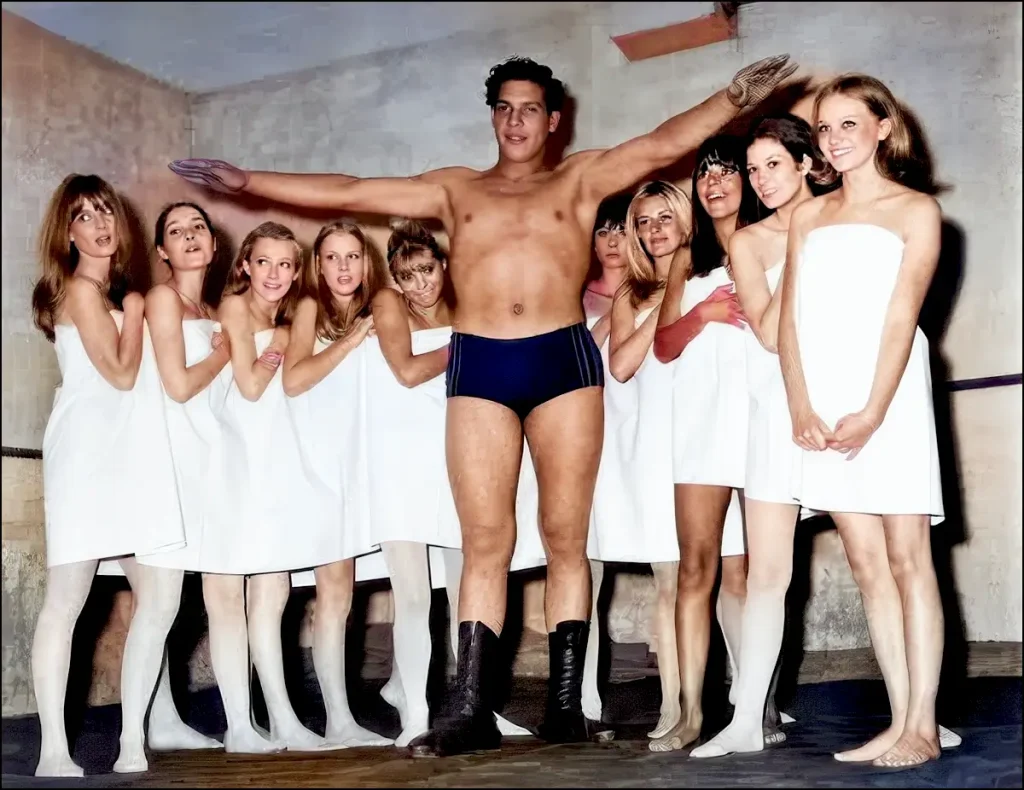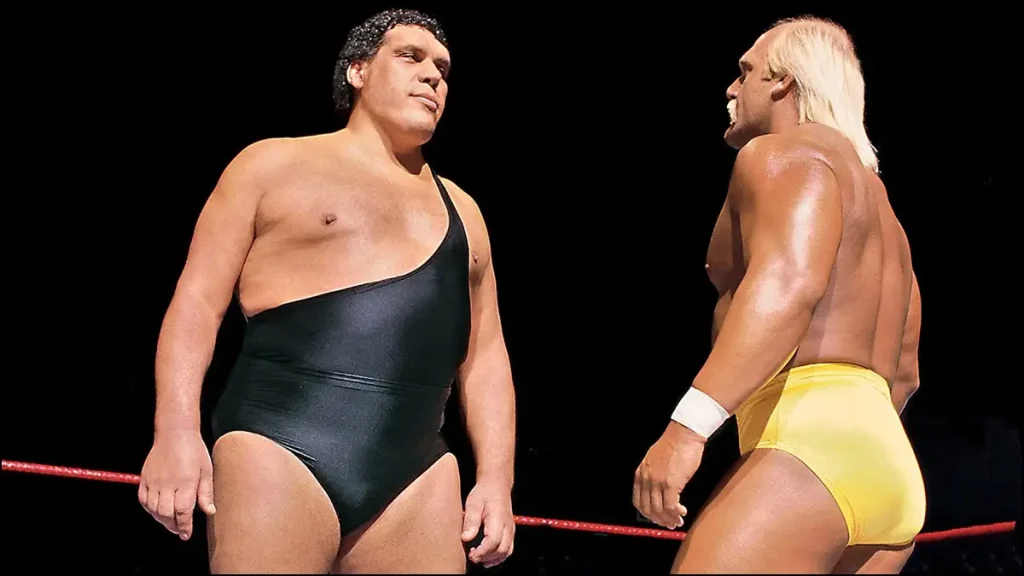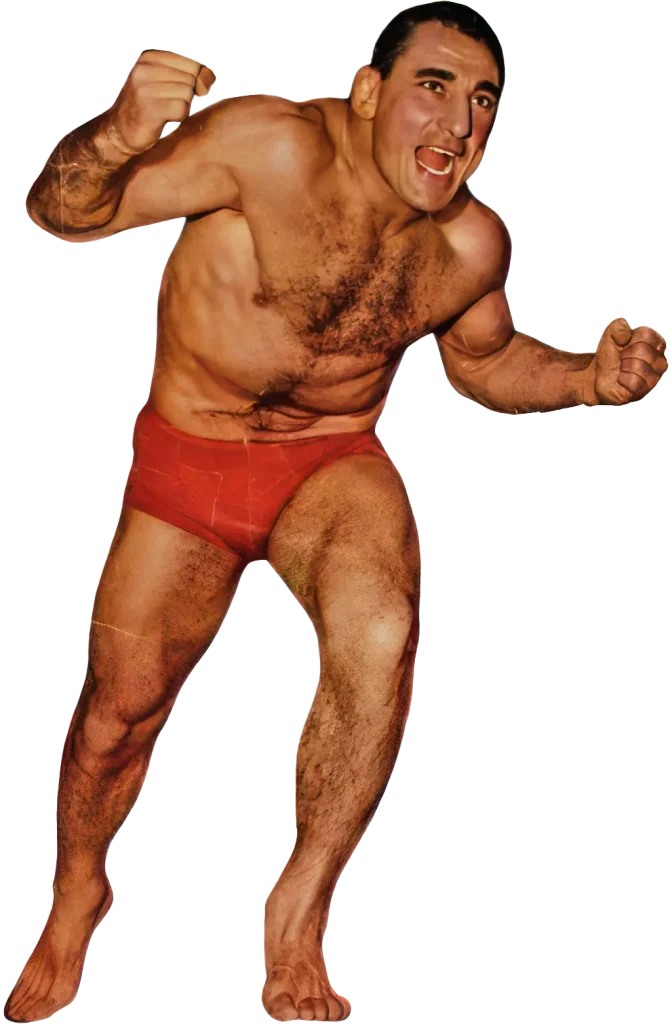
Antonino “Argentina” Rocca stands as a paramount figure within the annals of professional wrestling, heralding an era of innovation and spearheading the domain of “high-flying” grapplers. Beyond his groundbreaking wrestling technique, Rocca emerges as an unrivaled box office draw, securing his position as the preeminent attraction of his time. At the pinnacle of his celebrity, “Argentina” Rocca transcends the confines of wrestling to become a universally recognizable sporting icon. Antonino, also acknowledged as Antonio, plays a pivotal role in the surge of wrestling’s popularity spurred by the advent of television, standing as a quintessential figure of the “Golden Age,” inspiring generations of wrestlers.
Real Name: Antonino Biasetton
Stats: 6′ 0″, 224 lbs.
Born: April 13, 1921
Early Life
Career
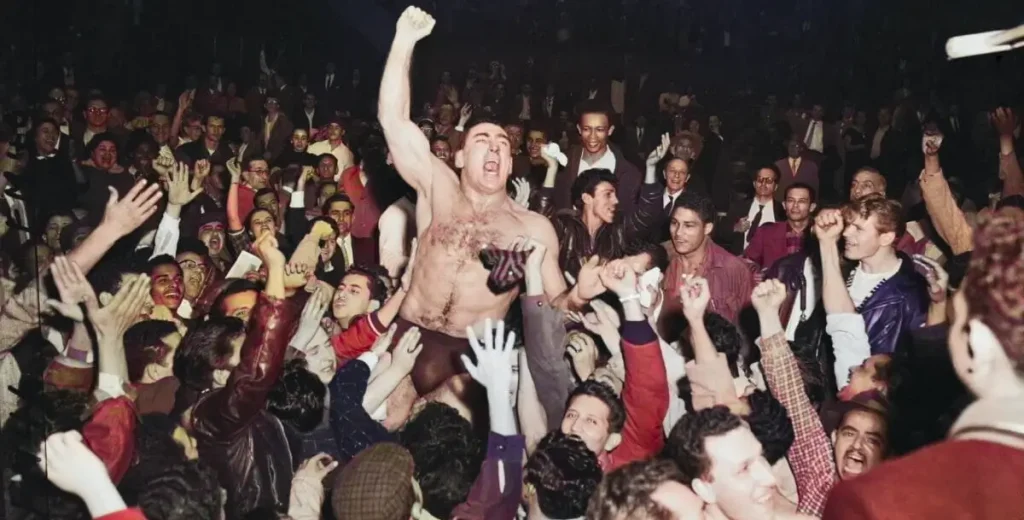
Rocca Being Carried by Fans at Madison Square Garden.
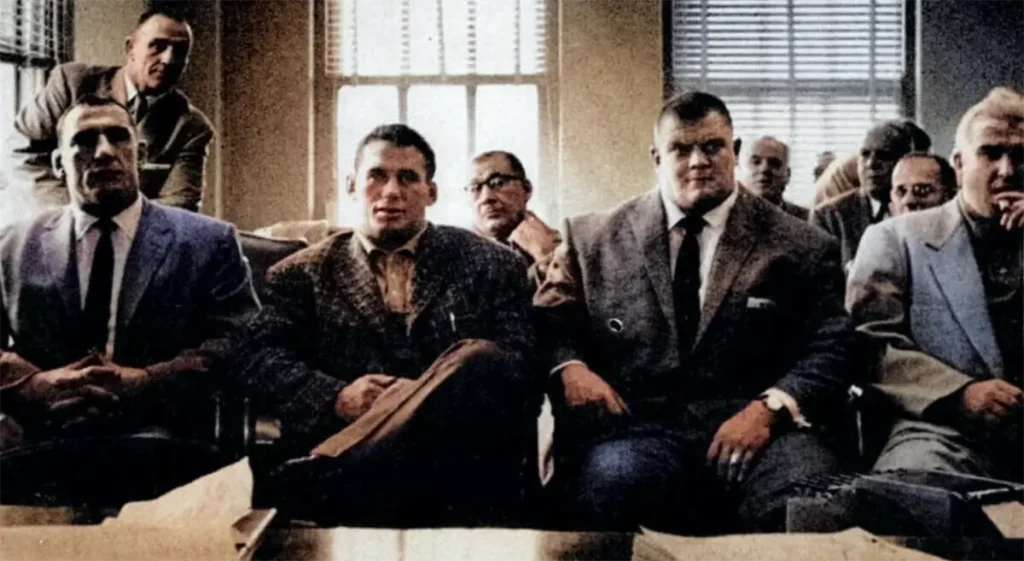
Antonino Rocca, Eduoard Carpentier, Dick the Bruiser and Jerry Graham Attend the 1957 the New York State Athletic Commission Hearing.
Rivalries
Retirement
Personal Life
Death
Awards & Titles
Legacy
Antonino Rocca’s legacy in the world of professional wrestling is a profound one. He was not only one of the most talented wrestlers of his era but also helped redefine the sport itself, pushing the boundaries of what was possible in the ring and inspiring countless wrestlers who came after him. Vincent J. McMahon said of him, “Next to Milton Berle, Rocca sold more TVs in the country than anyone else. He was wrestling on five different TV stations at that time. There was never a more likableand more personable fellow in sports. There was nothing phony about Tony.”
Resources
- History of Wrestling. “Antonino Rocca.” Available at: https://historyofwrestling.com/antonino-rocca/
- Wikipedia contributors. “Antonino Rocca.” Wikipedia, The Free Encyclopedia. Available at: https://en.wikipedia.org/wiki/Antonino_Rocca
- Classic Wrestling Articles. “Antonino Rocca Dies At 49.” Available at: https://classicwrestlingarticles.wordpress.com/2013/01/23/antonino-rocca-dies-at-49/
- WWE. “Antonino Rocca.” Available at: https://www.wwe.com/superstars/antoninorocca
- CageMatch. “Antonino Rocca.” Available at: https://www.cagematch.net/?id=2&nr=1178
- Pro Wrestling Stories. “The Night Wrestling Erupted into a Riot at Madison Square Garden.” Available at: https://prowrestlingstories.com/pro-wrestling-stories/1957-msg-riot/
- Project WWF. “Profile: Antonino ‘Argentina’ Rocca.” Posted on April 5, 2021. Available at: https://projectwwf.com/2021/04/05/profile-antonino-argentina-rocca/
Frequently Asked Questions
Antonino Rocca, also known as “Argentina,” was a transformative figure in the world of professional wrestling. He was acclaimed for his innovative, high-flying wrestling style and was a significant box office draw. Outside of wrestling, he became a universally recognized sports icon.
Born on April 13, 1921, in Treviso, Italy, as Antonino Biasetton, Rocca grew up during the post-WWI era. His family moved to Rosario, Argentina, where he excelled in soccer and rugby. He graduated from Rosario University in 1949 with a degree in electrical engineering.
Rocca was renowned for his high-flying maneuvers and was an aerial specialist. Unlike many of his contemporaries, he wrestled barefoot. He was known for moves like the Argentine Backbreaker and was applauded for his extraordinary balance and coordination.
Yes, he had major matchups against stars like Lou Thesz, Buddy Rogers, Jerry Graham, Dick the Bruiser, and many others.
Rocca retired initially in 1969 but made occasional appearances later on. He finally left the ring and joined Capitol Wrestling (later the World-Wide Wrestling Federation) as an announcer.
Rocca is remembered for redefining wrestling with his unique style. He is inducted into several Halls of Fame, including WWE and the Hispanic Heritage Hall of Fame. Vincent J. McMahon once said that Rocca, along with Milton Berle, sold more TVs than anyone else during his time.


